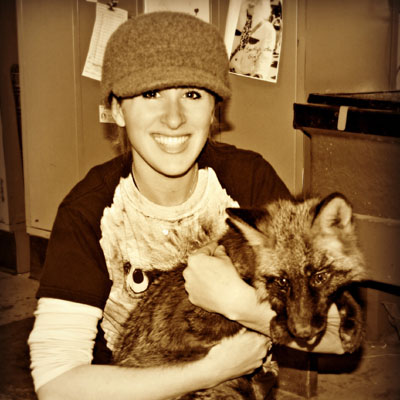I've been a broadcast meteorologist on television since the early 1990's. Happy to answer any questions about the weather or local TV news. Yes, I often wear sneakers on set just out of view of the camera.
Interesting question. A little out of my area as a local meteorologist. You might have some luck looking around the website for National Center for Atmospheric Research. https://ncar.ucar.edu/
Great question. A cold air event, like the current one, is a good bit less complicated than rain or snow. With a precipitation forecast there are more factors at play. In general a forecast gets fuzzier the further out it time you go. Broadly speaking the forecast starts with data gathered from weather balloons launched twice a day from about 900 sites around the world. That sounds like a big number but when you consider the size of the earth, and how much of it is covered by water, which is hard to launch a balloon from, that data is pretty sparse. The goal of the balloons is to take a snapshot of the atmosphere at a given moment. It is a fuzzy picture. Think of putting that fuzzy picture on a copy machine. The copy is fuzzier, then make a copy of a copy and so on. So the further out in time the more errors or changes that enter the forecast. Stay warm!
Tough to say without seeing the pictures. If you would like to post them somewhere with a link I'd be happy to look. You could also do a Google search for "cloud classification" and see if something looks familiar.
Hi, Erin. I’d go to weather.gov (not .com). Click on your area of the map and it will take you to the local National Weather Service office and you’ll see phone and email on the bottom. Good luck.
Certified Nurse Aide
 Is it true that STD rates in nursing homes are going through the roof?
Is it true that STD rates in nursing homes are going through the roof?
Zookeeper and Animal Trainer
 Why are some people so protective of endangered species?
Why are some people so protective of endangered species?
Antiques Dealer
 Does a piece's value increase significantly if it has a cool "back-story" to go along with it?
Does a piece's value increase significantly if it has a cool "back-story" to go along with it?
Great question, Jim. An Atlantic hurricane can come to Texas, and in a rare case New Mexico. The storms are guided by the upper atmospheric pattern of ridges and troughs. Imagine hills and valleys. The atmosphere is always in motion and a storm will take the easiest path, harder to climb a hill, easier to go through the valley. The general pattern during hurricane season has a hill over the Atlantic and storms will travel around the edge of the hill toward the valley in the eastern US, but remember the hills and valleys can change. Also, this year hurricanes from the Pacific have brought rain to NM and TX.
Hi, Jeremiah. Here is a great site. http://www.cpc.ncep.noaa.gov/
Hello, Mrs. Mills. Broadly speaking the leeward side of the Allegheny Mountains would be the eastern side, closer to the coast. At any given moment the windward side of anything is that facing the wind. In general terms the broad atmospheric flow is west to east across the United States. Here is a good definition on Wikipedia. Thanks. https://en.wikipedia.org/wiki/Windward_and_leeward
-OR-
 Login with Facebook
Login with Facebook (max 20 characters - letters, numbers, and underscores only. Note that your username is private, and you have the option to choose an alias when asking questions or hosting a Q&A.)
(A valid e-mail address is required. Your e-mail will not be shared with anyone.)
(min 5 characters)
By checking this box, you acknowledge that you have read and agree to Jobstr.com’s Terms and Privacy Policy.
-OR-
 Register with Facebook
Register with Facebook(Don't worry: you'll be able to choose an alias when asking questions or hosting a Q&A.)